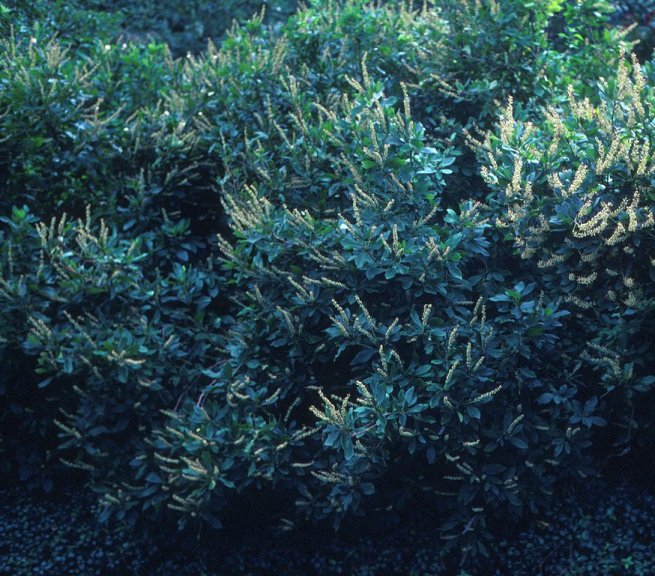| Botanical Name: Clethra alnifolia | |
| Common Name: Summersweet |

-
Anatomy
-
Culture
-
Design
Plant Type
Shrub
Height Range
3-6', 6-12'
Flower Color
White
Flower Season
Summer
Leaf Color
Dark Green
Bark Color
Brown
Fruit Color
Brown
Fruit Season
Winter, Fall, Persistent
Sun
Full, Half, Shade
Water
High
Growth Rate
Moderate
Soil Type
Sandy, Clay, Loam, Rocky
Soil Condition
Average, Rich, Well-drained, Moist
Soil pH
Acid, Neutral
Adverse Factors
Attracts Bees
Design Styles
English Cottage, Formal, Woodland
Accenting Features
Fragrance, Showy Flowers
Seasonal Interest
Summer
Location Uses
Entry, Shrub Border, Foundation, Walls / Fences
Special Uses
Cut Flowers, Erosion Control, Hedge
Attracts Wildlife
Birds
Information by: Stephanie Duer
Photographer: Beverly Leftwich
Photographer: Beverly Leftwich
-
Description
-
Notes
Summersweet is a slender, upright, deciduous shrub which typically grows 3 to 8 feet tall and 4 to 6 feet wide. It features fluffy, bottle brush-like, terminal, 3 to 6-inch spikes of extremely fragrant white flowers which bloom on current season's growth for in mid to late summer. Foliage is serrated, glossy, and dark green, turning to a striking yellow in autumn. Flower spikes give way to spikes of dark brown seed capsules which persist into winter and provide continuing interest. Flowers are very attractive to butterflies and bees. A good choice for a rain garden.
Grow in a loamy, rich, well drained to slightly wettish soil in full sun to part shade; in our hot summers it will require less water in part shade. Tolerates full shade, though it may reduce flowering.